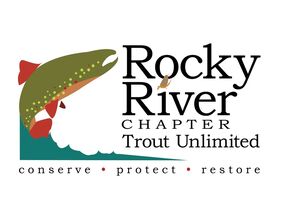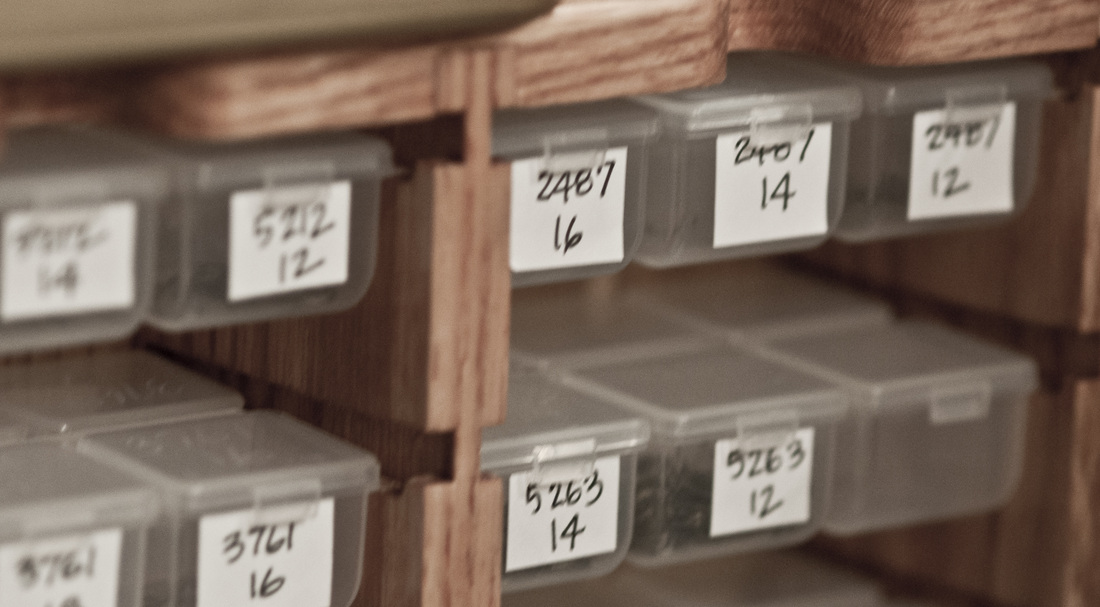Fly Tying Tips
Fly Tying Tips
Picked-up from well-known fly tyers during the annual Fly Fishing Show; learned from each other during membership fly tying classes; and, gleaned from fly tying articles and publications (edited slightly to better fit current tying methodologies and materials) fly tying tips are
timeless and valuable.
Picked-up from well-known fly tyers during the annual Fly Fishing Show; learned from each other during membership fly tying classes; and, gleaned from fly tying articles and publications (edited slightly to better fit current tying methodologies and materials) fly tying tips are
timeless and valuable.
|
Topic Index (alphabetical order)
Color Coding Hook Preparation Make the Fly More Visible Material Substitutions |
Color Coding
Hooks Sizes can be Deceiving When you put your size 12 Adams and size 14 Adams you just tied in the same slot in your fly box, it can be difficult to select the larger or the smaller fly by simply looking at one fly and judging it's actual size. Instead, us a different color tying thread to mark the larger versus the smaller fly. Use three different colors if you tie three sizes of the same fly and mix them in your fly box together in the same slot. Same Fly, Different Sink Rate We all have our go-to nymph pattern that we use to search for fish both acros the stream and up and down the water column. Obviously, you may use a different number of split shot to the leader to get the nymph down to different depths. An alternative is to tie the same nymph with different amounts of lead substitute wire for the underbody of nymphs targeted for near-bottom, mid-water column and subsurface. Use a different color of tying thread to readily know which nymph is which. For example, use black for subsurface with little or no wire underbody, use brown for mid-water column with a half-shank of wire underbody and red for near-bottom with a full-shank of wire underbody. Hook Preparation
Barbless and not Pointless There is a slight risk of breaking the point of the hook off rendering a fly worthless when bending down the barb. This is not something that you want to happen while on the stream long after you tied the fly and just after tying the fly on the tippet. Instead, bend down the barb and sharpen the hook before placing the hook in the vise. If the hook point is going to break off, best it happen before investing all you're time into tying a fly on a hook that is prone to breaking. No more Twisted on the Hook You selected one of your best-looking hand tied flies, tied it on the tippet and now you are releasing the first or second fish caught on your fly. A proud moment! But wait, is the fly twisted on the hook? Why is the bend of the hook coming out sideways to the body of the fly? Was the wrapping of the base thread or body on the hook shank not tight enough? Well, it probably was tight enough but the hook shank is a smooth round shaft which has a tendency to allow twisting once the materials are wet and particularily when the head cement did not soak fully down through the whip finish and in contact with the hook shank. A simple remedy to the twisting is to place a few file strokes to the top of the hook shank and rough up the smooth surface. When the wraps of base thread are applied, the thread will grab the rough surface and prevent any possible twisting. Make the Fly More Visible
Hi-Vis Color Being able to see your dry fly drifting downstream a good distance away is important to both know when you have the slightest drag as well as keeping a sharp eye on the exact spot where a strike may occur. Parachute posts are typically tied with white material and this works wonderfully on dark water. However, white is hardly visible in the bright mid-day sunlight. One solution is to tie half of the same flies with a white parachute post and the other half with a hot pink parachute post. The hot pink will work well under both conditions but tends to blend in during the early morning and late evening low-light conditions when the white parachute post will likely stand out more. Seeing Dark Flies You have a box full of well proportioned, good floating black ants that are highly productive during the summer and early fall. Well, productive at those times when you are lucky on tracking the fly and seeing the strike. Lucky because you are guessing where that black ant is that you really do not see. The solution to this problem is to add to the fly pattern recipe by adding a Hi-Vis topper. Tie on a hot pink, fluorescent yellow, fluorescent chartreuse or white piece of poly-yarn or razor foam with a few wraps of thread like a collar, then with a whip finish and head dement. The topper is visible to you and on the top side out of view to the fish. Material Substitutes
Biots A goose feather biot and a turkey feather biot are virtually the same unless you need the longer turkey biot for your fly pattern Dubbing Purchase a simple, low-cost coffee grinder and blend your own dubbing to an exact match of the aquatic insect you are imitating. If the exact dubbing color can not be found and purchased, your blend becomes priceless. Head Cement Hard as Nails from the cosmetic counter or SuperGlue are stronger substitutes for Head Cement. Be sure to clear the hook eye with a needle when each fly dries to save valuable stream time later. Thread If you know the flies you are about to tie will be quickly destroyed by a toothy brown trout, use kevlar thread instead of the usual nylon tying thread. Tinsel Use leftover Christmas tinsel for the wing case on your flashback nymphs instead of purchasing a spool of large tinsel. Both are mylar and Christmas tinsel comes in gold, silver, pearl, blue, red and green. |
_________________________________________________________________________________________________________________________________________________________________
Rocky River Chapter of Trout Unlimited (c) 2014

